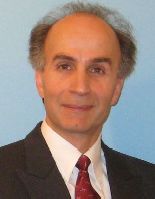A 300-GHz 52-mW CMOS Receiver with On-Chip LO Generation
This event is free and open to the publicAdd to Google Calendar

LOCATION: GG Brown, Rm 2505
Abstract: The 300-GHz band holds great potential for high-speed data communication. With the creation of the IEEE 802.15.3d standard in 2017 for radios operating in the unlicensed frequency band from 252 GHz to 322 GHz, there is now heightened interest in developing terahertz transceivers. Moreover, a number of researchers have demonstrated the viability of such radios in CMOS technology, portraying a promising future. These examples consume between 140 mW and 650 mW and employ off-chip local oscillators (LOs).
In this presentation, we contend that the feasibility of terahertz data-communication radios hinges upon their power consumption. We then present a fully-integrated receiver that employs a heterodyne architecture with 270-GHz and 30-GHz local oscillators to alleviate phase mismatch issues. The system incorporates three on-chip phase-locked loops to generate the LO phases for both downconversions. Realized in 28-nm CMOS technology, the prototype exhibits a noise figure of 16-20 dB, a gain of 17-21dB, and a 1-dB compression point of -17.3 dBm. The phase noise of the 270-GHz PLL is -105 dBc/Hz at 10-MHz offset, amounting to an integrated jitter of 106 fs from 10 kHz to 10 MHz. The compact design occupies an active area of 0.06 mm2.
Bio: Behzad Razavi is Professor of Electrical Engineering at UCLA, where he conducts research on analog and RF integrated circuits. Prof. Razavi has served as an IEEE Distinguished Lecturer and published more than 200 papers and eight books. He has received nine IEEE best paper awards and six teaching and education awards, and his books have been published in seven languages. He received the IEEE Pederson Award in Solid-State Circuits and was recognized as one of the top ten authors in the 50-year history of the IEEE International Solid-State Circuits Conference. He is a member of the US National Academy of Engineering and a fellow of the US National Academy of Inventors.
 MENU
MENU 
